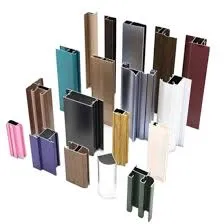how is wrought iron produced
How is Wrought Iron Produced?
Wrought iron, known for its malleability, ductility, and resistance to corrosion, has been a favored material since antiquity. Its production process combines traditional methods with modern techniques, maintaining its reputation in metalworking, architecture, and art. Understanding how wrought iron is produced illuminates the craft's historical significance and contemporary applications.
Historical Context
Wrought iron’s origins date back to around 3000 BCE, when early civilizations began to forge iron from its ores. The term wrought comes from the Old English wyrcan, meaning to work, emphasizing the labor-intensive process of shaping the metal. Unlike cast iron, which is poured into molds, wrought iron is characterized by its low carbon content, typically less than 0.08%. This property allows it to be heated and worked without breaking.
Extraction of Iron Ore
The journey of wrought iron begins in the iron ore mines. Iron is primarily extracted from two types of ores hematite (Fe2O3) and magnetite (Fe3O4). After extraction, the ore undergoes crushing and grinding to free the iron content from the surrounding materials. The powdered ore is then concentrated through processes such as flotation, magnetic separation, or gravity separation, maximizing the iron yield.
Smelting Process
Once the iron ore has been concentrated, the next step is smelting, which takes place in a furnace. Traditionally, a bloomery furnace was used for producing wrought iron. This type of furnace operates at lower temperatures than a blast furnace, generally reaching about 1200-1300 degrees Celsius. The smelting process involves mixing the iron ore with charcoal and a flux such as limestone. The carbon from the charcoal acts as a reductant, removing the oxygen from the iron ore.
As the furnace heats, the iron begins to separate from the slag, which consists of impurities and flux. The result is the formation of a spongy mass of iron, known as a bloom. This bloom is typically about 80% iron, and it still contains some slag, which can affect its quality.
Forging the Iron
how is wrought iron produced

The bloom is then removed from the furnace and hammered to expel any remaining slag and forge the iron into a denser, more workable material. This process, known as forging, can be performed by hand or using mechanical hammers. The iron is heated repeatedly and shaped into bars or other desired forms. Throughout this stage, the wrought iron gains its characteristic fibrous structure, which contributes to its strength and durability.
Repeating the Process
The production of high-quality wrought iron often requires several cycles of heating, hammering, and folding. Each cycle refines the iron by further reducing impurities and increasing its density. This method is akin to the ancient practice of creating layered or patterned wrought iron, resulting in visually appealing as well as structurally sound materials, often used in decorative applications.
Modern Techniques
In modern metallurgy, while traditional methods still hold value, advancements have transformed wrought iron production. Continuous casting and modern furnace technology allow for large-scale production. However, artisanal smiths still favor traditional techniques for creating unique and bespoke items. The artisans’ attention to detail and commitment to quality reflect a deep understanding of the material’s properties.
Applications of Wrought Iron
Wrought iron’s unique characteristics make it suitable for various applications. Its natural resistance to corrosion makes it an excellent choice for outdoor furniture, gates, and railings. Additionally, artists and craftsmen often use wrought iron in sculptural works and intricate designs, showcasing its versatility and aesthetic appeal.
Conclusion
The production of wrought iron, from its ancient origins to its modern interpretations, embodies the intersection of artistry and engineering. The labor-intensive processes of extraction, smelting, and forging yield a material that has stood the test of time. As we continue to innovate and push the boundaries of metallurgy, the legacy of wrought iron remains a testament to human craftsmanship and ingenuity. Whether in historical artifacts or contemporary design, wrought iron’s beauty and strength continue to captivate and inspire.
-
Wrought Iron Components: Timeless Elegance and Structural StrengthNewsJul.28,2025
-
Window Hardware Essentials: Rollers, Handles, and Locking SolutionsNewsJul.28,2025
-
Small Agricultural Processing Machines: Corn Threshers, Cassava Chippers, Grain Peelers & Chaff CuttersNewsJul.28,2025
-
Sliding Rollers: Smooth, Silent, and Built to LastNewsJul.28,2025
-
Cast Iron Stoves: Timeless Heating with Modern EfficiencyNewsJul.28,2025
-
Cast Iron Pipe and Fitting: Durable, Fire-Resistant Solutions for Plumbing and DrainageNewsJul.28,2025
-
 Wrought Iron Components: Timeless Elegance and Structural StrengthJul-28-2025Wrought Iron Components: Timeless Elegance and Structural Strength
Wrought Iron Components: Timeless Elegance and Structural StrengthJul-28-2025Wrought Iron Components: Timeless Elegance and Structural Strength -
 Window Hardware Essentials: Rollers, Handles, and Locking SolutionsJul-28-2025Window Hardware Essentials: Rollers, Handles, and Locking Solutions
Window Hardware Essentials: Rollers, Handles, and Locking SolutionsJul-28-2025Window Hardware Essentials: Rollers, Handles, and Locking Solutions -
 Small Agricultural Processing Machines: Corn Threshers, Cassava Chippers, Grain Peelers & Chaff CuttersJul-28-2025Small Agricultural Processing Machines: Corn Threshers, Cassava Chippers, Grain Peelers & Chaff Cutters
Small Agricultural Processing Machines: Corn Threshers, Cassava Chippers, Grain Peelers & Chaff CuttersJul-28-2025Small Agricultural Processing Machines: Corn Threshers, Cassava Chippers, Grain Peelers & Chaff Cutters












